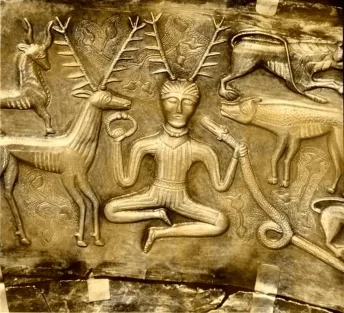Neopaganism is a recent movement which is a modern take on ancient practices. It is an umbrella term that can include a variety of traditions or practices from different cultures, such as Celtic, Norse, Germanic, Slavic, Greek, Roman, and Egyptian.
Definitions of paganism are hard because pagans mostly do not operate within a centralised religious body or follow a standard set of rules. However a few common threads tie together pagan movements, including the belief that everything is sacred and blessed, and everything is interconnected. Most pagan traditions are earth-centered, recognize both male and female deities, and stress a connection to and respect for the natural world. They are also mostly animistic (believing everything in the world has a spiritual presence) and polytheistic (meaning they believe in many gods or deities).
Celtic Reconstructionist Paganism is a polytheistic reconstructionist approach to Celtic Neopaganism. Celtic Reconstructionism recognizes a number of sub-traditions or denominations, such as Scottish, Irish, Welsh, and even within New World colonies such as Nova Scotia and other parts of North America.
Celtic Reconstructionism is a mix of Celtic Studies with pre-Christian Celtic spiritual practice. Many Neo-Druid groups follow the Celtic Reconstructionist path, and both groups read similar historical, anthropological and archaeological texts as part of their study.
Some beliefs of Celtic Reconstructionists include:
- The connection to ancestors and land spirits.
- Reverence for pre-Christian Celtic deities.
- Environmental awareness.
- Respect for women.
- Strong moral code, stressing truthfulness, honour and personal responsibility.
It also involves a connection to ancient Celtic culture, mythology and folklore, through both historical accuracy and poetic inspiration. The Celtic Calendar is often followed, which includes Samhain (Oct 31), Oímealg/Imbolc (Feb 1), Bealtaine (May 1), and Lúnasa/Lúghnasadh (Aug 1).
Given that the Celts themselves left no written record, and the only accounts documenting the Celtic way of life was written by early Roman and Greek sources, it seems reconstructing Celtic culture would be difficult. However archeological evidence, comparative anthropology, and other historical manuscripts can piece together what little we know about the ancient Celts.
Many Celtic Reconstructionists have Celtic ancestry, however all that is required is an interest in Celtic culture. And while it might not be the aim of Celtic Reconstructionists to revive all ancient Celtic practices, many wish to preserve the spirit of the ancient Celts along with their mythology and folklore, artwork and symbology, poetry and prayer.
Wiki – Celtic Reconstructionist Paganism
IMBAS – What is CR
Pàganachd agus Págánacht – What is CR
© The Celtic Journey (2013)





